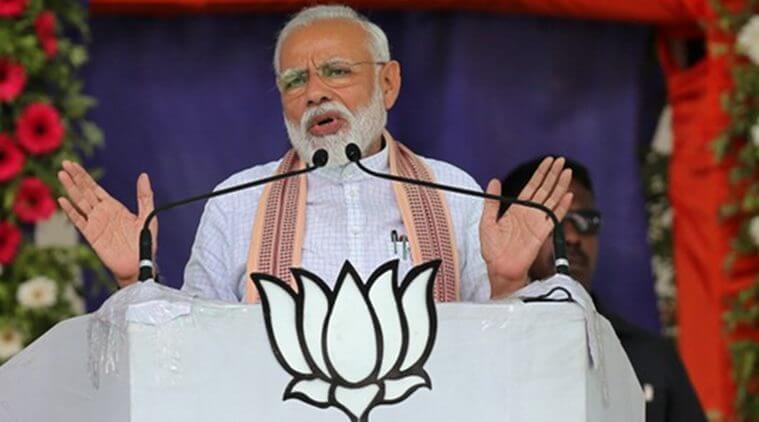The 5 trillion-dollar question: Ambition or Obsession?
India’s government has managed to convert the fiscal policy into a no-holds-barred pursuit of a magical five trillion-dollar economy. The mark will be reached one day, during or after Modi’s tenure. But, can a single quantitative detail supersede all other facets of economic dialogue? In January 2018, still in his first tenure, Prime Minister Narendra Modi, in his speech at the World Economic Forum summit in Davos, floated the five trillion-dollar mark, realizable by 2025, as a vote of confidence in India’s youth. In October 2019, now re-elected with a thumping majority, Modi claimed that the roadmap for the ambitious target was ready, while delivering the keynote address at the Future Investment Initiative Forum, referred to as ‘Davos in the Desert’, in Riyadh.
Based on statements, however, in the intervening period about the self-determined target, you would be forgiven for thinking, the words ‘healthy and robust economy’ has been replaced by a ‘5 trillion-dollar economy’.
Daredevilry with a dash of dogma
Although Modi has always expressed his belief in development politics, especially after his promotion to Raisina Hill from the post of Gujarat Chief Minister, he has never shied away from grandiose announcements, amidst fanfare. Not for him, the sheer focus on enacting reforms à la Franklin Roosevelt in his first 100 days and letting the economy take its logical course.
What does it say about ambition, though, when officials indulge in brainstorming after the Prime Minister envisions a statistical outcome? Isn’t it a tacit admission that the original claim was based on bluff and bluster? What about members of the Union Cabinet, who hardly complete a public engagement without a customary mention of the five trillion-dollar jackpot?
Wouldn’t it be more prudent for our administrators to primarily focus on the building blocks of the economy encompassed under their watch, especially at a time when economic growth is at a six-year low?
For every praise from the World Bank President, who terms Modi’s 5 trillion clarion call as a powerful vision, there is an adjoining reality check from the International Monetary Fund, which slashes India’s growth forecast. However, in resonance with the tone of a regime which incurred publicity expenditure to the tune of Rs. 5,726 crores during its first tenure, public discourse has turned into painting the accomplishment of a particular Gross Domestic target as the provision of a public good, rather than what it essentially stands for — the result of economic activity.
In that context, NITI Aayog CEO Amitabh Kant’s comments calling for every citizen to ‘sacrifice’ to ensure the actualization of the holy grail of 5 trillion-dollars are hardly surprising. Nevertheless, it is a huge goal for a policymaker, given the implicit confession that, despite all the unadulterated urgency in chasing the GDP target, there wouldn’t be much for the masses to be gleeful about.
Economic Output Estimate or Corporate Earnings Call
The pervasive theme across commentary, of the kind, alluded to above, by those in government and on the periphery, is that of managers calling on their employees to burn the midnight oil, to justify lofty earnings projections. In ‘The Party’s Over: The Role of Earnings Guidance in Resolving Sentiment-Driven Overvaluation’, the authors reiterate earlier findings that earnings calls tend to be negative surprises for stakeholders, more often than positive ones. If the financial statements of entities can have such repercussions, what explains the belligerence of India’s powers-that-be, about the sureness of success, against a reference point, which aggregates private consumption and net exports, alongside public consumption, wherein any government can only claim to impact the last metric tangibly?
Caution, not negativity
None of the above in any way doubts or despises any future upturn; the Indian economy will take. Those questioning the risk management framework of the government, which should never be beyond reproach, are not ‘professional pessimists’ as the Prime Minister dubs them.
In any event, it is not as if the five trillion-dollar economy, once achieved, will constitute the end of any journey. Further, if, by a quirk of fate or folly, the benchmark cannot be met by 2025 (or 2024, shifting deadlines by those in power), it would not in itself, discredit any success achieved in the prelude to the much-vaunted due date.
Former Prime Minister Manmohan Singh recently warned, “…It is not a tiny command and control economy that can be bullied and directed at will. Nor can it be managed through colorful headlines and noisy media commentary.” Using a quarterly computed and rigorously analyzed statistic like the GDP, excessively for setting awe-inspiring targets, rather than as an ongoing control mechanism would be a colossal waste of an equally colossal political mandate.
The 5 Trillion-Dollar Question: Administrative Ambition or Earnings Guidance?
December 20, 2019

